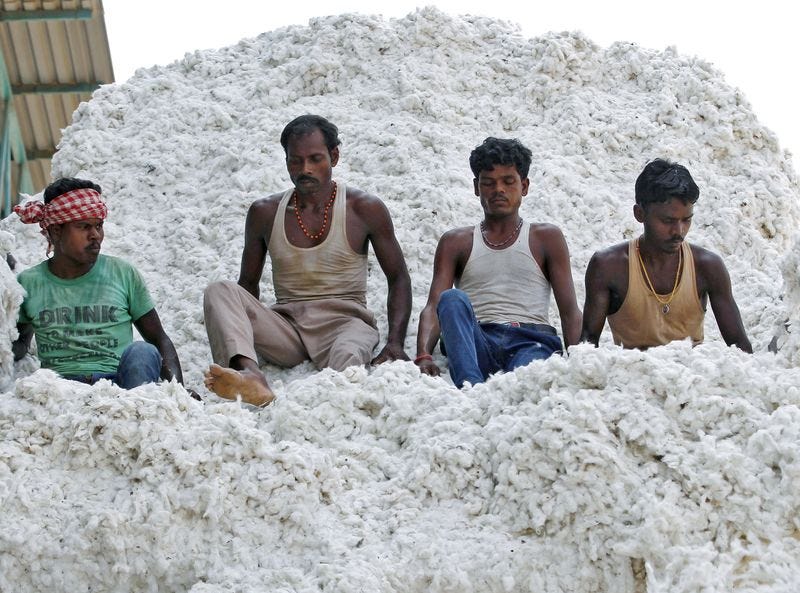Increased cotton arrivals, a boon for domestic and export markets in India

Latest data from the Cotton Association of India (CAI) reveals, daily cotton arrivals across the country have witnessed a significant increase compared to the same period last year. As of December 4, 2024, daily arrivals was 199,300 bales (33,881 metric tons), a substantial jump from the 150,000 bales (25,500 metric tons) recorded during the corresponding period in the previous year.
This increase in arrivals is particularly pronounced in Gujarat, Maharashtra, and Telangana, indicating a robust start to the 2024-2025 cotton season. The cumulative arrivals for the season have also reached 6.2 million bales (1.05 million metric tons), surpassing the 5 million bales (0.85 million metric tons) recorded during the same period last year. Increased cotton availability is expected to boost domestic yarn production and textile manufacturing. This could lead to lower yarn prices, benefiting downstream industries and potentially driving consumer demand for apparel and home textiles. Moreover With a larger cotton supply, India is well-positioned to increase its exports of raw fiber, yarn, and finished textile products. This could further strengthen India's position in the global textile market and contribute to economic growth.
What led to the increase
There are several factors behind this increase in cotton arrivals. First is the favorable weather conditions; the monsoon season this year has been largely good in most cotton-growing regions, leading to improved yields and higher production. Farmers have reportedly increased the acreage dedicated to cotton cultivation this year, encouraged by the remunerative prices witnessed in the previous season. And harvesting operations have commenced earlier than usual in certain regions, leading to an early influx of cotton into the market.
Impact on domestic and export markets
The rise in cotton arrivals is expected to have an impact on both domestic and export markets.
Domestic market: The increased supply of cotton is likely to exert downward pressure on domestic cotton prices, making it more affordable for textile mills and yarn manufacturers. This could lead to increased production and potentially lower prices for finished textile products in the domestic market.
Export market: The availability of larger quantities of cotton could boost India's export potential, particularly for raw cotton fiber and cotton yarn. However, the global demand for cotton and the prevailing international prices will play a crucial role in determining the actual export volumes.
Supply chain dynamics: The increased arrivals could also impact the entire cotton supply chain, including ginning, spinning, weaving, and garment manufacturing. Increased raw material availability will enable spinning mills to operate at higher capacities and potentially negotiate better prices for cotton. With ample cotton supply, yarn manufacturers can increase production and cater to both domestic and international demand. The logistics and warehousing sectors could also experience increased activity due to the higher volume of cotton being transported and stored.
While the increased cotton arrivals present a positive outlook, certain challenges and considerations remain. For example, the cotton market is known for price fluctuations. Maintaining price stability will be crucial to ensure sustained growth in the industry. Maintaining consistent quality standards for cotton and yarn too is essential to meet the demands of both domestic and international buyers. Adequate infrastructure, including transportation and storage facilities, is also crucial for smooth movement and handling of the increased cotton volume. And promoting sustainable cotton farming practices and responsible water management will be crucial for long-term environmental and economic viability.
Overall, the significant increase in cotton arrivals in India signals a potentially robust year for the cotton industry. However, careful monitoring of market dynamics, addressing quality concerns, and ensuring smooth supply chain operations will be essential to fully capitalize on this positive trend.
